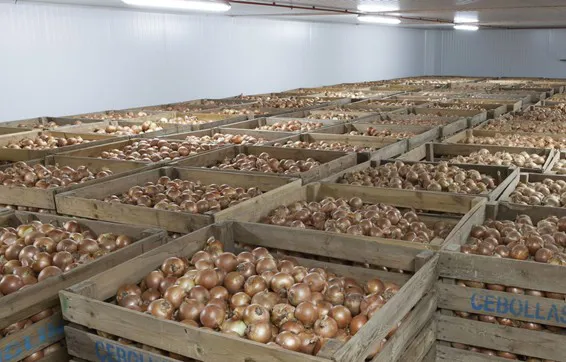In this past campaign, Europe has broken records in terms of acreage and production. The data from the Netherlands (main European producer), together with those from Germany, the United Kingdom, France and Italy, reveal that the European onion production in 2019 was the greatest ever, reaching 6.34 million tons; 19% more than in the previous year. This situation has caused Spanish onion sales to be carried out at very low prices.

The end of the marketing campaign for the Spanish onions harvested in 2019 is being marked by great difficulties with the large sizes. The declaration of the state of alarm, the closure of the horeca industry, which is the main marketing channel for large calibers, and the European situation have resulted in a collapse in the demand for this type of calibers.
"At this point in the season, cold stores should be almost empty, but they are still at 60% of their capacity, as the sale of large onions has been almost impossible," says Justo Gutiérrez, president of Procecam, the Association of Onion Producers of Castile-La Mancha.
“These leftover onions will make things tough at the start of the campaign. It is worth keeping in mind that the storage costs of these onions cause the total costs to skyrocket, and not being able to market it is causing serious damage. We would like to dispose of these onions, so that they reach the food banks and, at least, not have to throw them away,” he says.
The 2020 Spanish onion campaign is therefore looking challenging. "In addition to the situation of large-caliber onions in warehouses, there is also a new harvest underway, which has, in turn, been affected by imports of medium-sized onions from the southern hemisphere. Imported onions have a longer shelf life than the new Spanish varieties, so some distribution chains prefer them," says Justo Gutiérrez.
But this is not the only cause for the severe situation of the new early onion campaign. According to the representative of this association, "the lack of laborers in Andalusia, which is the second largest producing region, is also a threat. Even though onions are an increasingly mechanized crop, the early varieties have a thinner skin and their harvest has to be carried out manually."
"The data on the acreage available for onion planting in Europe reveals that the reduction expected by the sector won't happen. In countries such as the Netherlands, France or Germany, onion cultivation is backed by direct payments from the Common Agricultural Policy and has lower production costs than in Spain, which is hurdled by high energy costs derived from the crop's irrigation. This has resulted in the campaign being profitable for the European producing sector, but not for the Spanish," he says.
The Association of Onion Producers of Castile-La Mancha (PROCECAM) currently has 178 direct partners and brings together more than 371 onion producers, with over 7,120 hectares cultivated in 2019.
For more information:
PROCECAM
Calle San Clemente, 50.
02600 Villarrobledo. Albacete. Spain
T: +34 638 103 910
info@procecam.es
procecam.es
